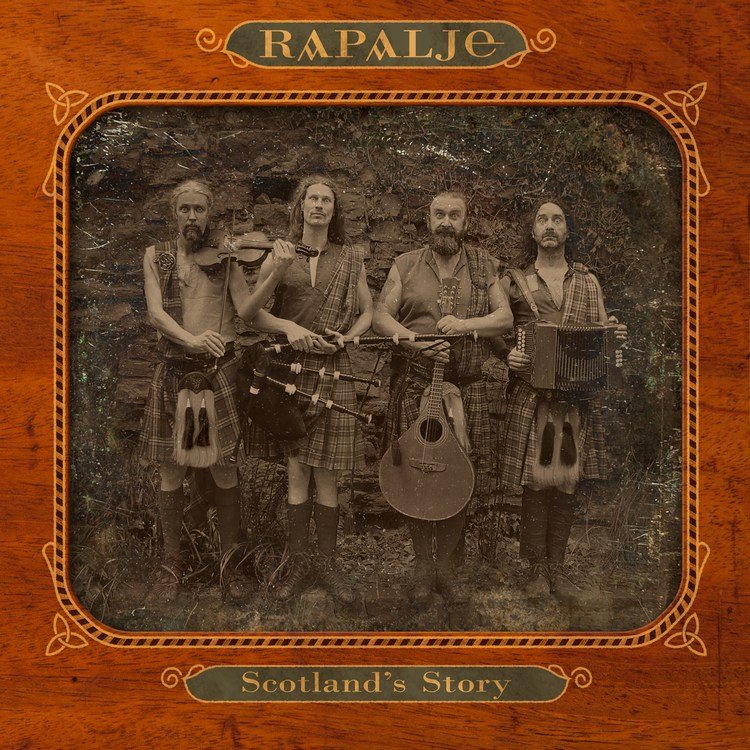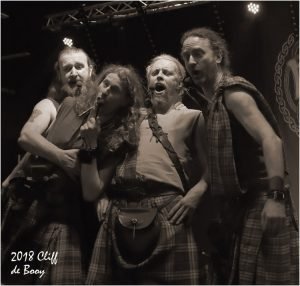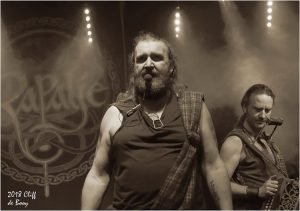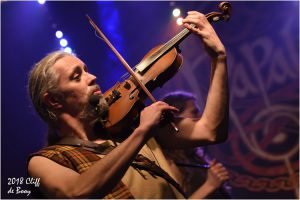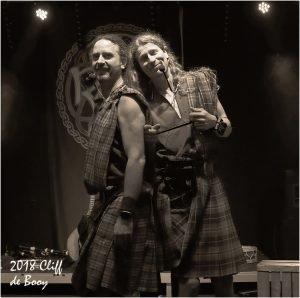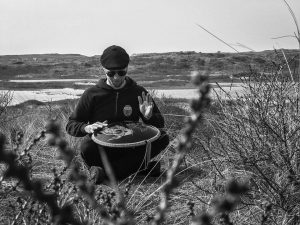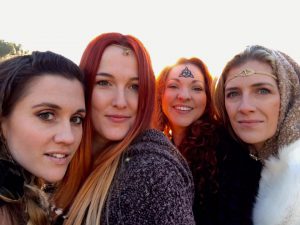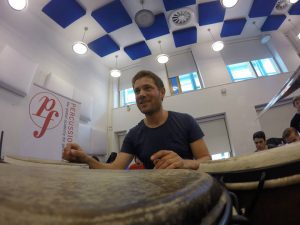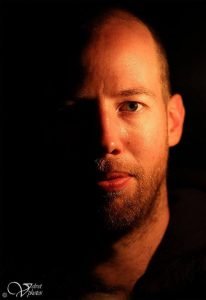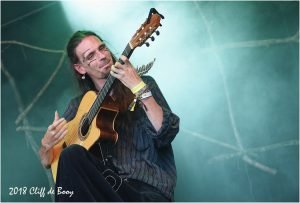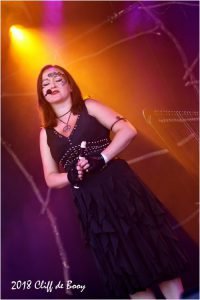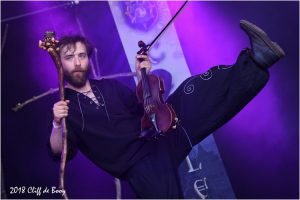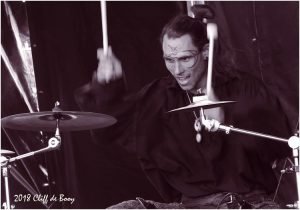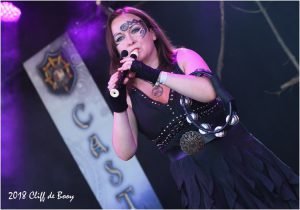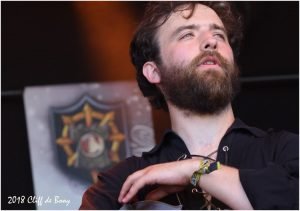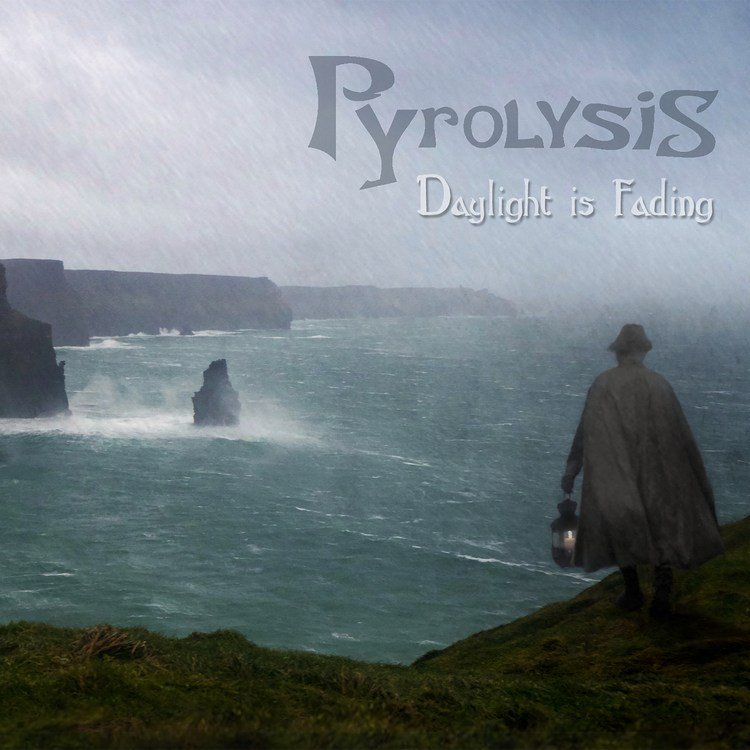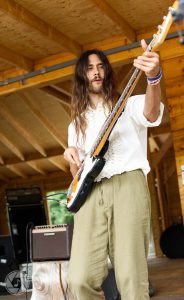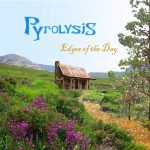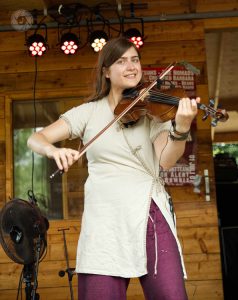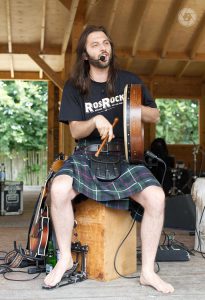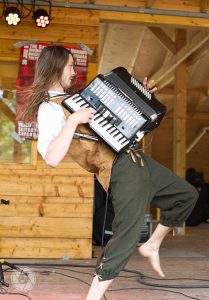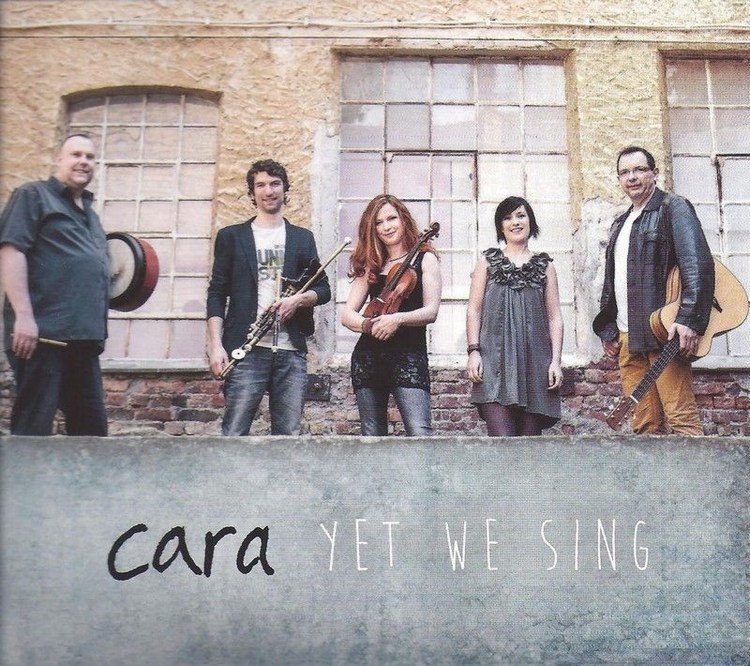
We didn’t focus that much on pure Irish folk CDs in this review section yet, Gwendolyn Snowdon‘s Three Strand Braid, Shantalla‘s From The East Unto The West and of course Clannad‘s early works are the only ones I can think of. But that is about to change. A while ago I got the request from Ilona to review one of her favourite bands, together with a pile of music to listen to. The band is called Cara and the music doesn’t get more Irish than this, even though Cara are a German band. Since their origins in 2003 the band produced 7 CDs, toured the better part of Europe, became successful in the USA, even being voted best new artist of 2009 and top group of 2010 with the Irish Music Association. They were also nominated for a best record award three times. In 2007 in Germany for the CD In Between Times and in 2010 Long Distance Love was nominated, not only in their homeland Germany but also again with the Irish Music Association based in the USA, so you can safely say that Cara have had a successful career up till now. It was almost Inevitable that they would be the second band featured in the CeltCast Classics series. So let’s introduce Cara a bit more.
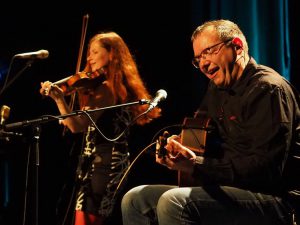 It all started in 2003 when Gudrun Walther (vocals, fiddle and accordion, left on picture), Jürgen Treyz (guitar, right on picture), Sandra Steinort (vocals, piano and flute) and Claus Steinort (uilleann pipes and flute) formed Cara. Shortly after Rolf Wagels (bodhrán) joined and in this formation the band recorded the studio albums In Colour (2004) and In Between Times (2007) followed by a live CD and DVD called In Full Swing (2008). From 2007 onwards Cara did several tours throughout America, gaining more and more success. It was in these years that Cara won the two Irish Music Awards. Also at this point Sandra and Claus Steinort couldn’t mix the busy tour live with their other obligations and decided to leave the band.
In the video above you see the original line-up playing Please Be Peter – taken from their second CD In Between Times – live at Bonfeld Folk im Schlosshof 2008.
They were replaced by Jeana Leslie, winner of the BBC radio 2 young folk awards (vocals, piano and flute) and multiple all Ireland uilleann pipes champion Ryan Murphy. You could call it a winning line-up. The result was Long Distance Love that came out in 2010.
In 2013 Jeana Leslie started studying *) and in her place Scottish singer/songwriter Kim Edgar joined the band. In that line-up the band recorder Horizon (2013). In 2014 Ryan Murphy had to leave the band due to his busy schedule **) and he was replaced by German uilleann pipe player Hendrik Morgenbrodt. With this line-up the band recorded the albums Yet we sing (2016) and their latest CD Live (2018). Shortly after that long time member Rolf Wagels left the band and Aimée Farrell Courtney was welcomed in the Cara family.
The debut In colour
With all those line-up changes you would think that the sound of the band changed tremendously over the years, but actually it didn’t. It’s still lovely Irish folk music, featuring female vocals, uilleann pipe, flute and violin. All in a clean, calming and almost fragile way. I didn’t hear any distorted instrument or forced singing note on any of the CDs. From the first notes of the opening track on the debut CD In Colour it is clear that the strongest point in Cara’s music are the stunning vocals. The voices of Gudrun Walter and Sandra Steinort are beautiful, crystal clear and work really well together. (As does the combination of Gudrun together with Kim Edgar on later albums.) The harmonies between the two ladies are beautiful. The clean sound of the guitar, violin and uilleann pipes even enhance those lovely voices. Track one, The King And The Fair Maid, is a cheerful introduction into Cara’s music that made me eager for more. Luckily there is more, a lot more actually. You have Three Ravens for example. A beautiful ballad that is a bit in the tradition of Twa Corbiez. The way it is sung reminds me a lot of Gwendolyn Snowdon on her album Three Strand Braids. Or listen to There Is Light, the last song on In Colour. It starts as a lullaby, so tender and fragile with a lovely piano accompaniment – not to mention the acoustic guitar solo in it – but it ends as a grand acoustic power ballad.
From the CD In Between Times (2007) I could name the uptempo, slightly eerie Poisoned Peas with it’s lovely harmony singing and the fast pace of the guitar and uilleann pipes in it, I could name the strong ballad The House Carpenter or I could mention The Maid Of Whitby a nice upbeat song, with a slight country slide guitar in there and a lovely violin solo. This song makes me think of an acoustic version of
the Corrs.
Both CDs are lovely examples of Irish folk. They have an almost 50/50 balance between instrumental – and vocal songs, all well played. Both In colour and In Between Days will not look out of place in any folk collection.
Cara playing Odd Rhythms a song written by Jürgen Treyz, taken from the 2013 album Horizon
Now I didn’t have the pleasure to listen to In Full Swing (2008) or Long distance Love (2010) yet, so I pick up the story with the 2013 album Horizon. For me the odd one out. On this CD Cara chose a more pop orientated production, with a electronic keyboard sound at times and a strong bass guitar. It turns the feel of the music in a mix of folk and soul/jazz, even funk/jazz in some songs. Just listen to Master Of Consequence or Odd Rhythms, both instrumental songs sound like funk legends
Shakatak
gone folk music. It takes a bit of getting use to but it actually works. Good examples are the upbeat jazz/folk instrumental Big Jigs or the pop-like Be Gone. Other highlights on Horizon are the beautifully sung ballad Blood, Ice And Ashes -think
Matt Bianco
meets Irish folk – and the more country orientated ballad The Bonny Lad. Cara are sooo good with their ballads, it is really one of their strong points.
Yet We Sing, The CeltCast Classic
With the 2016 album Yet We Sing, Cara pick up their old sound again, losing the pop/jazz production of Horizon. Opening A Leaf For A Sail is another one of those beautiful ballads that Cara are so well known for. With a theme and a feel that takes me back to
Sandy Denny‘s
The North Star Grassman And The Ravens and a feel that reminds me a lot of Gwendolyn Snowdon’s interpretation of that song on Three Strand Braid. The Elfin Knight could also have been on Three Strand Braid. Kim Edgar has the same tone of voice and the same style of singing as Gwendolyn Snowdon. There is yet another similarity between Cara and Gwendolyn Snowdon. Their ability to tell a story. Cara clearly stepped away from the traditional call and response type of folk songs that made up the majority of their first two albums to lean towards modern popsongs, with strong lyrics telling a story, sung solo by either Kim Edgar or Gudrun Walther. Cain’s War for instance is a pure protest song, making a powerful statement against fanatism, religion and weapons, Cara I fully agree! Anchor In The Sky and Yet We Sing are two more beautiful ballads. I keep mentioning those, I realise, but honestly, the vocal quality of Cara make buying all of their CD’s worthwhile.
Up till now didn’t mention the instrumental songs much, although 50% of the albums are filled with them. The instrumental songs on the first two Cds are nice Irish folk tunes, mid tempo Jigs and reels played to perfection in the pure Irish way. Nice duets between Violin, flute or uilleann pipes. They may not have the adventurous arrangements as some of the vocal songs, but therefore are islands of calm between the vocal escapades. I love Songs like Reels For Hecki, the balladesque Buddleja, the gypsy style And Off He Went -all found on In Colour– or the almost Arabian sound of C’mon Tiger – found on In between Days- and fans of traditional folk will find many more instrumental gems on the first two Cara albums. As I mention earlier Cara leave the traditional approach of the instrumentals on the CD Horizon, opting for a more groovy jazz approach.
It all started in 2003 when Gudrun Walther (vocals, fiddle and accordion, left on picture), Jürgen Treyz (guitar, right on picture), Sandra Steinort (vocals, piano and flute) and Claus Steinort (uilleann pipes and flute) formed Cara. Shortly after Rolf Wagels (bodhrán) joined and in this formation the band recorded the studio albums In Colour (2004) and In Between Times (2007) followed by a live CD and DVD called In Full Swing (2008). From 2007 onwards Cara did several tours throughout America, gaining more and more success. It was in these years that Cara won the two Irish Music Awards. Also at this point Sandra and Claus Steinort couldn’t mix the busy tour live with their other obligations and decided to leave the band.
In the video above you see the original line-up playing Please Be Peter – taken from their second CD In Between Times – live at Bonfeld Folk im Schlosshof 2008.
They were replaced by Jeana Leslie, winner of the BBC radio 2 young folk awards (vocals, piano and flute) and multiple all Ireland uilleann pipes champion Ryan Murphy. You could call it a winning line-up. The result was Long Distance Love that came out in 2010.
In 2013 Jeana Leslie started studying *) and in her place Scottish singer/songwriter Kim Edgar joined the band. In that line-up the band recorder Horizon (2013). In 2014 Ryan Murphy had to leave the band due to his busy schedule **) and he was replaced by German uilleann pipe player Hendrik Morgenbrodt. With this line-up the band recorded the albums Yet we sing (2016) and their latest CD Live (2018). Shortly after that long time member Rolf Wagels left the band and Aimée Farrell Courtney was welcomed in the Cara family.
The debut In colour
With all those line-up changes you would think that the sound of the band changed tremendously over the years, but actually it didn’t. It’s still lovely Irish folk music, featuring female vocals, uilleann pipe, flute and violin. All in a clean, calming and almost fragile way. I didn’t hear any distorted instrument or forced singing note on any of the CDs. From the first notes of the opening track on the debut CD In Colour it is clear that the strongest point in Cara’s music are the stunning vocals. The voices of Gudrun Walter and Sandra Steinort are beautiful, crystal clear and work really well together. (As does the combination of Gudrun together with Kim Edgar on later albums.) The harmonies between the two ladies are beautiful. The clean sound of the guitar, violin and uilleann pipes even enhance those lovely voices. Track one, The King And The Fair Maid, is a cheerful introduction into Cara’s music that made me eager for more. Luckily there is more, a lot more actually. You have Three Ravens for example. A beautiful ballad that is a bit in the tradition of Twa Corbiez. The way it is sung reminds me a lot of Gwendolyn Snowdon on her album Three Strand Braids. Or listen to There Is Light, the last song on In Colour. It starts as a lullaby, so tender and fragile with a lovely piano accompaniment – not to mention the acoustic guitar solo in it – but it ends as a grand acoustic power ballad.
From the CD In Between Times (2007) I could name the uptempo, slightly eerie Poisoned Peas with it’s lovely harmony singing and the fast pace of the guitar and uilleann pipes in it, I could name the strong ballad The House Carpenter or I could mention The Maid Of Whitby a nice upbeat song, with a slight country slide guitar in there and a lovely violin solo. This song makes me think of an acoustic version of
the Corrs.
Both CDs are lovely examples of Irish folk. They have an almost 50/50 balance between instrumental – and vocal songs, all well played. Both In colour and In Between Days will not look out of place in any folk collection.
Cara playing Odd Rhythms a song written by Jürgen Treyz, taken from the 2013 album Horizon
Now I didn’t have the pleasure to listen to In Full Swing (2008) or Long distance Love (2010) yet, so I pick up the story with the 2013 album Horizon. For me the odd one out. On this CD Cara chose a more pop orientated production, with a electronic keyboard sound at times and a strong bass guitar. It turns the feel of the music in a mix of folk and soul/jazz, even funk/jazz in some songs. Just listen to Master Of Consequence or Odd Rhythms, both instrumental songs sound like funk legends
Shakatak
gone folk music. It takes a bit of getting use to but it actually works. Good examples are the upbeat jazz/folk instrumental Big Jigs or the pop-like Be Gone. Other highlights on Horizon are the beautifully sung ballad Blood, Ice And Ashes -think
Matt Bianco
meets Irish folk – and the more country orientated ballad The Bonny Lad. Cara are sooo good with their ballads, it is really one of their strong points.
Yet We Sing, The CeltCast Classic
With the 2016 album Yet We Sing, Cara pick up their old sound again, losing the pop/jazz production of Horizon. Opening A Leaf For A Sail is another one of those beautiful ballads that Cara are so well known for. With a theme and a feel that takes me back to
Sandy Denny‘s
The North Star Grassman And The Ravens and a feel that reminds me a lot of Gwendolyn Snowdon’s interpretation of that song on Three Strand Braid. The Elfin Knight could also have been on Three Strand Braid. Kim Edgar has the same tone of voice and the same style of singing as Gwendolyn Snowdon. There is yet another similarity between Cara and Gwendolyn Snowdon. Their ability to tell a story. Cara clearly stepped away from the traditional call and response type of folk songs that made up the majority of their first two albums to lean towards modern popsongs, with strong lyrics telling a story, sung solo by either Kim Edgar or Gudrun Walther. Cain’s War for instance is a pure protest song, making a powerful statement against fanatism, religion and weapons, Cara I fully agree! Anchor In The Sky and Yet We Sing are two more beautiful ballads. I keep mentioning those, I realise, but honestly, the vocal quality of Cara make buying all of their CD’s worthwhile.
Up till now didn’t mention the instrumental songs much, although 50% of the albums are filled with them. The instrumental songs on the first two Cds are nice Irish folk tunes, mid tempo Jigs and reels played to perfection in the pure Irish way. Nice duets between Violin, flute or uilleann pipes. They may not have the adventurous arrangements as some of the vocal songs, but therefore are islands of calm between the vocal escapades. I love Songs like Reels For Hecki, the balladesque Buddleja, the gypsy style And Off He Went -all found on In Colour– or the almost Arabian sound of C’mon Tiger – found on In between Days- and fans of traditional folk will find many more instrumental gems on the first two Cara albums. As I mention earlier Cara leave the traditional approach of the instrumentals on the CD Horizon, opting for a more groovy jazz approach.
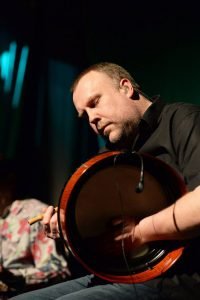 On Yet We Sing I notice a wee bit of a difference in those instrumentals. Although returning to the traditional style of folk Cara played on the first two albums, on Yet We Sing they start adding little twists and improvisations that make music so interesting for me.
There is Heroes, a nice upbeat collection of jigs and reels, with the third section going into a reggae rhythm (!?), just to spice things up, as the band writes themselves in the CD insert. Now that got my attention! Land Of The Midnight Sun is folk meets chamber music, while The Legend of Lisalway, with a lovely uilleann pipes melody, takes us back to the jazz influences on Horizon for a moment. The Naked Man In The Whirlpool starts as a lovely guitar piece and continues as an instrumental ballad instead of a traditional Irish dance. A Wee Dobro Tune is indeed written as a dobro solo piece, with some additional piano and violin. All in all I love the instrumentals just as much as the vocal pieces on this album, making Yet We Sing a clear CeltCast Classic!
So we come to the traditional conclusion and I can tell you that the more I listened to Cara’s music, the more their music grew on me. If I would compare them with a bottle of wine I would describe their music as a mature, yet supple, easy to drink red wine with a lovely bouquet of exquisite vocal harmonies. The instrumentals give the music a lovely vanilla tone with notes of surprising melted dark chocolate especially on the later CDs. fans of the early Clannad albums – especially Clannad 2 or Shantalla really should give Cara’s music a listen, and Yet We Sing is the perfect CD to start that journey.
On Yet We Sing I notice a wee bit of a difference in those instrumentals. Although returning to the traditional style of folk Cara played on the first two albums, on Yet We Sing they start adding little twists and improvisations that make music so interesting for me.
There is Heroes, a nice upbeat collection of jigs and reels, with the third section going into a reggae rhythm (!?), just to spice things up, as the band writes themselves in the CD insert. Now that got my attention! Land Of The Midnight Sun is folk meets chamber music, while The Legend of Lisalway, with a lovely uilleann pipes melody, takes us back to the jazz influences on Horizon for a moment. The Naked Man In The Whirlpool starts as a lovely guitar piece and continues as an instrumental ballad instead of a traditional Irish dance. A Wee Dobro Tune is indeed written as a dobro solo piece, with some additional piano and violin. All in all I love the instrumentals just as much as the vocal pieces on this album, making Yet We Sing a clear CeltCast Classic!
So we come to the traditional conclusion and I can tell you that the more I listened to Cara’s music, the more their music grew on me. If I would compare them with a bottle of wine I would describe their music as a mature, yet supple, easy to drink red wine with a lovely bouquet of exquisite vocal harmonies. The instrumentals give the music a lovely vanilla tone with notes of surprising melted dark chocolate especially on the later CDs. fans of the early Clannad albums – especially Clannad 2 or Shantalla really should give Cara’s music a listen, and Yet We Sing is the perfect CD to start that journey.
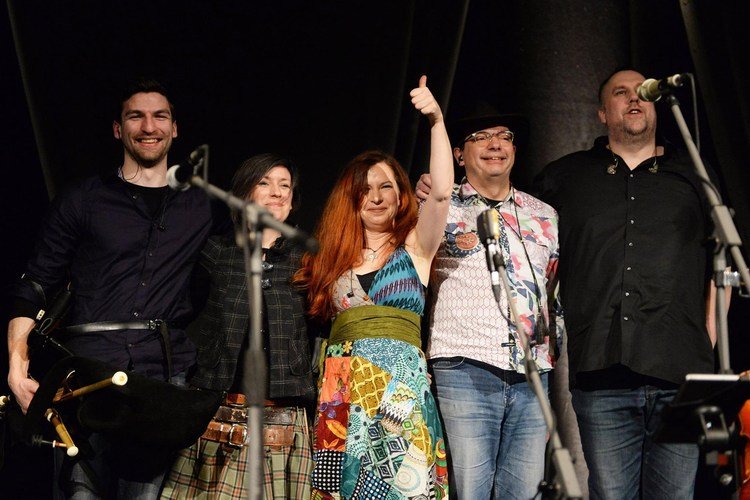 – Cliff
– Pictures by
Gregor Eisenhuth
, taken during the Yet We Sing release tour in 2016
PS. I started listening to Cara’s music and writing this introduction in the spring of 2019. Since that time Cara released a new single called Móran Tang. A really touching story that actually says a lot about Cara so I’ll quote Kim Edgar from the Cara site:
“As some of you will already be aware, my dad, Derek Edgar, sadly died of cancer in March 2017. He was an extra-ordinary man: creative, gentle, positive, loving, and determined. He remained just as extra-ordinary in facing cancer of an unknown primary source, for which no successful treatment could be found. In the last week of his life, I wrote him a thank you card, because I wanted him to know how grateful my brother, myself and my mum were to have him in our lives. He challenged me to take the words of that card, and turn them into a happy song – he knew/knows I find writing happy songs difficult! And he has always tried to encourage me to keep developing my skills. And that’s the song, Mòran Taing. The title is in Scots Gaelic, and the chorus means “many thanks, goodbye for now, fare you well for now, many thanks”.
– Cliff
– Pictures by
Gregor Eisenhuth
, taken during the Yet We Sing release tour in 2016
PS. I started listening to Cara’s music and writing this introduction in the spring of 2019. Since that time Cara released a new single called Móran Tang. A really touching story that actually says a lot about Cara so I’ll quote Kim Edgar from the Cara site:
“As some of you will already be aware, my dad, Derek Edgar, sadly died of cancer in March 2017. He was an extra-ordinary man: creative, gentle, positive, loving, and determined. He remained just as extra-ordinary in facing cancer of an unknown primary source, for which no successful treatment could be found. In the last week of his life, I wrote him a thank you card, because I wanted him to know how grateful my brother, myself and my mum were to have him in our lives. He challenged me to take the words of that card, and turn them into a happy song – he knew/knows I find writing happy songs difficult! And he has always tried to encourage me to keep developing my skills. And that’s the song, Mòran Taing. The title is in Scots Gaelic, and the chorus means “many thanks, goodbye for now, fare you well for now, many thanks”.And with this beautiful homage we end this review. Knowing Cara’s musical story still continues. *) Jeana Leslie is now part of the Scottish folk band Fara **)Ryan Murphy is now a member of the Scottish folk band Imar
